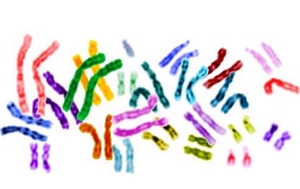Genome scientists at University of Washington in Seattle developed a technique of assembling DNA sequencing data along entire chromosomes that is less expensive and as accurate as current methods. The team from Washington’s medical school led by Jay Shendure published its findings earlier this week in the journal Nature Biotechnology (paid subscription required).
Shendure and colleagues aimed to find a cost-effective means of assembling genomic sequencing data, generated as short fragmented segments, into contiguous chains resembling the 23 pairs of chromosomes in humans. While DNA sequencing is rapidly dropping in cost, the lack of a practical and economically feasible method of assembling the data hampers analytical and diagnostic applications of those data.
To solve this problem, the Washington team focused on the physical interactions among chromosomes in the genome, which they hypothesized would indicate the regions of the genome closer in proximity to each other, thus providing clues to their grouping and ordering. For this part of the project, the researchers used a technology called Hi-C that deciphers the relaionship between the organization of a chromosome and its activity. Hi-C analysis indicates the genomic regions closer to other regions in the three-dimensional space of a cell’s nucleus called the chromatin.
The team still needed to put these sequences into their correct positions, which led to development of an algorithm that assigns, orders, and orients genomic data. This algorithm, known as LACHESIS — for ligating adjacent chromatin enables scaffolding in situ, but also the goddess in Greek mythology that measures the thread of life — was translated into software by first author Josh Burton.
The researchers tested their technique by applying it to data from inexpensive and accessible sequencing methods, then generating chromosome assemblies called scaffolds for genomes of fruit flies, mice, and humans. They then matched their findings against high-quality reference genomes performed by the Human Genome Project.
The results show for human genomes, the combination of Hi-C analysis and LACHESIS processing almost completely matched the high-quality reference data. They succeeded in achieving 98 percent accuracy in assigning scaffolds to the correct chromosome groups, and reached 99 percent accuracy in ordering and orienting those scaffolds within chromosome groups.
In addition to offering a more feasible way of assembling DNA sequencing data, the techniques may have immediate diagnostic value. The researchers say their methods can be appled to validating some types of chromosomal location abnormalities in cancer genomes.
- DNA Sequencing Performed with Tiny Samples, No Library Prep
- Wake Forest, NanoMedica to Partner on Sequencing Technology
- Faster Whole Genome Sequencing Developed for Infants
- Techniques Developed for Deeper Single-Cell Gene Sequencing
- DNA Sequencing Extended to Cancer Treatment Decisions
* * *


 RSS - Posts
RSS - Posts
You must be logged in to post a comment.